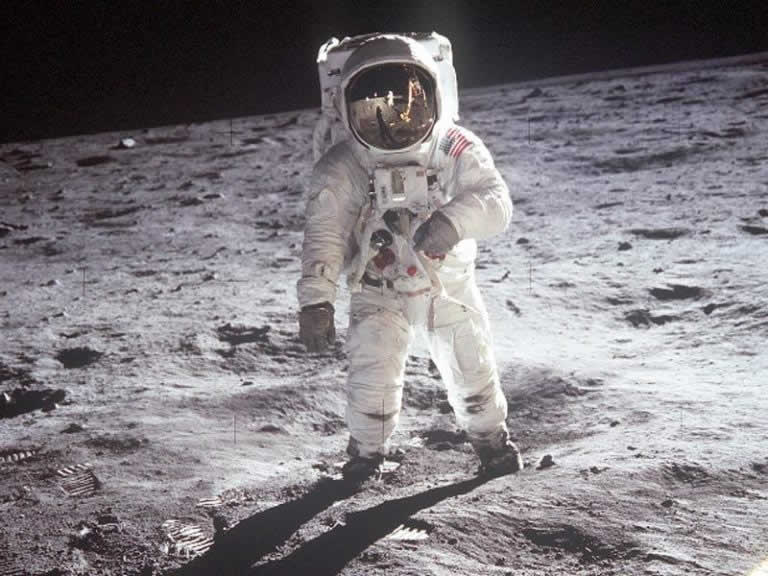 Buzz Aldrin on the lunar surface photographed by Neil Armstrong. Photograph: NASA
Buzz Aldrin on the lunar surface photographed by Neil Armstrong. Photograph: NASA

ifty years ago, American astronauts Neil Armstrong and Edwin “Buzz” Aldrin set foot on the lunar surface. Back in 1969, the United States was an unstoppable force. The US it seemed was so far ahead in science and technology, no other country even came close.
American businesses were at the forefront of technological innovation. Companies from other countries refused to compete head-to-head with US firms. America it appeared had the cash, the infrastructure, the smarts—through their first-rate universities, to beat competitors at every turn.
As a former American colony, the Philippines, for its part, basked in the power and glory of America. Among the countries in Southeast Asia, the Philippines was most like America and knew that country best. Filipinos never bothered beefing-up their military … what for, Uncle Sam had their backs—and in those days nobody messed with Uncle Sam.
But that was then. Today, America is not the invincible power it used to be. American companies no longer have the technological edge they had. The Europeans, the Japanese, the South Koreans, and the Chinese, now go head-to-head with US companies. And in truth, many foreign firms are well ahead of their American counterparts.
As America declined, so too did the Philippines. A few of its reefs and shoals, once untouchable due to America’s naval presence, are now occupied by China. Without a credible military deterrent of its own, the Philippines is unable to prevent China from occupying its territory.
However, the US military still has an edge over the People’s Liberation Army (PLA). America remains a force to be reckoned with. Although China has made it clear that it intends to surpass the US by 2049—the hundredth anniversary of the Communists rise to power—America for now is still number one.
And to slow China down even further, the US is forming military alliances with like-minded countries in the region. Australia, Japan, South Korea, Taiwan, New Zealand, India, and Singapore are all democratic countries that respect human rights and are sure to form the backbone of any alliance with the United States.
So, whose side should the Philippines be on? If we are a country that believes in the rule of law, freedom, and human rights, and if we remain true to the democratic ideals we have long cherished, then the answer is obvious. The Philippines should be part of the US alliance.
However, even if the country joins the American-led alliance, Filipinos should realize that hereafter, they need to shoulder their own national defense. They can no longer depend solely on America’s military might like they once did. America is no longer the invincible superpower it once was. And in the coming decades, its power could decline even further. All the while, new regional hegemons like China will appear and pick “low hanging fruit” like the Scarborough Shoal from weak defenseless countries like the Philippines without even batting an eye. The country thus needs to strengthen its regional alliances, build up its military prowess, and defend its territory. Published 7/17/2019
|